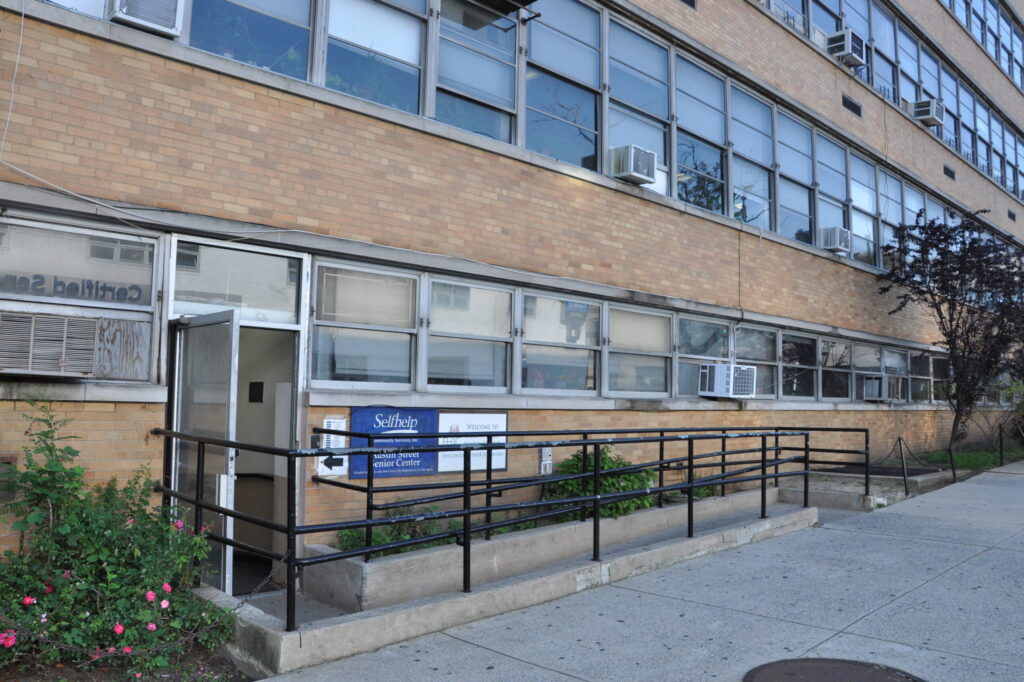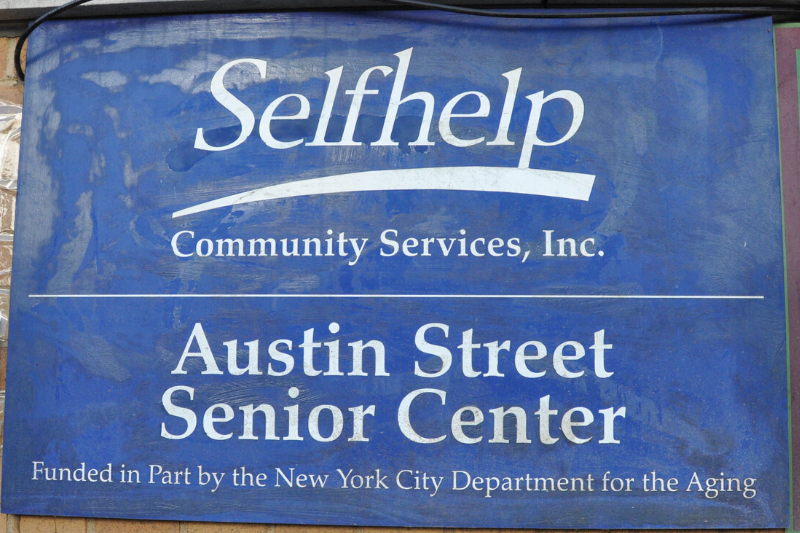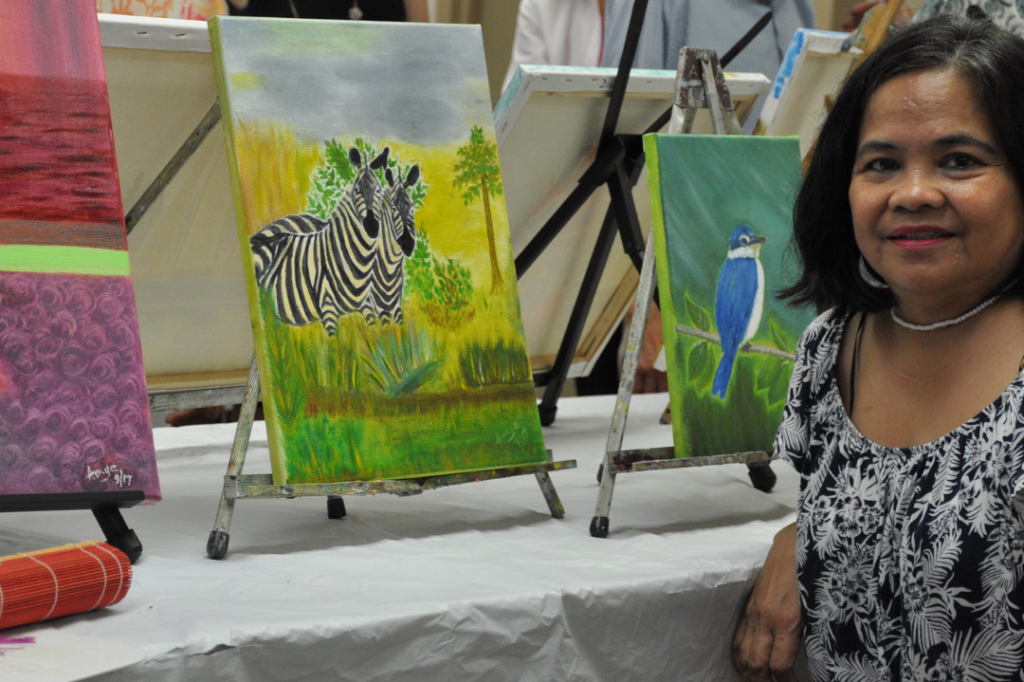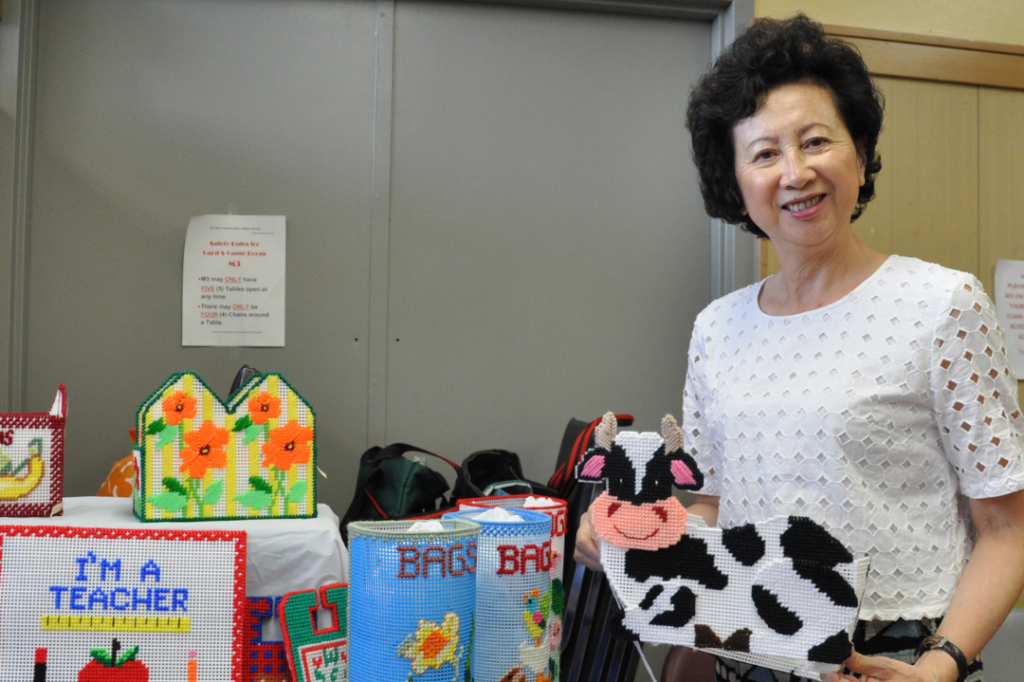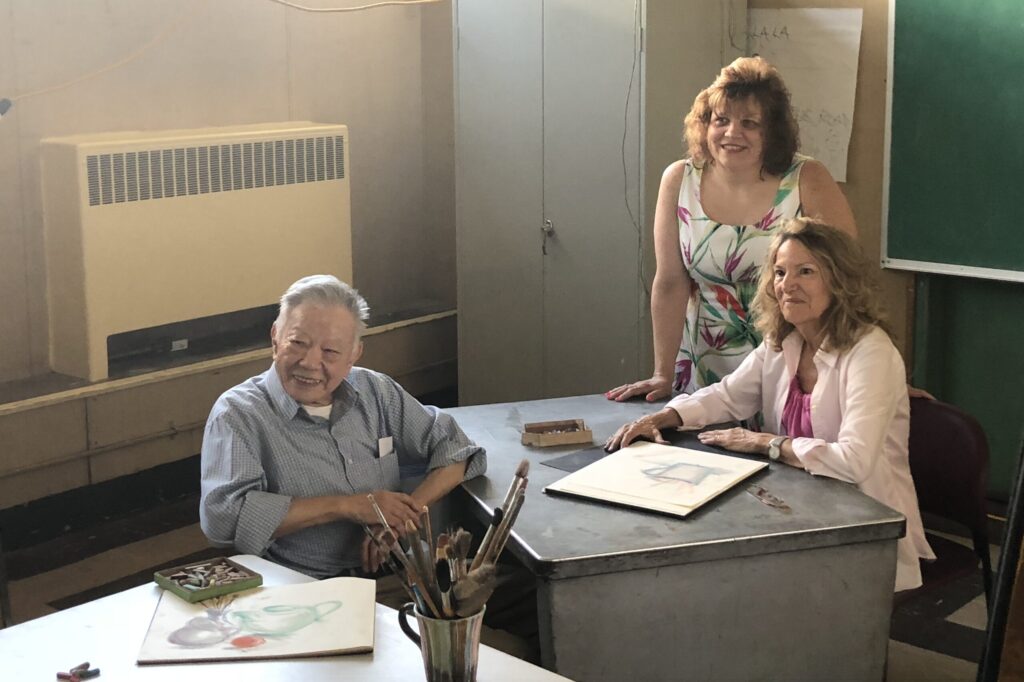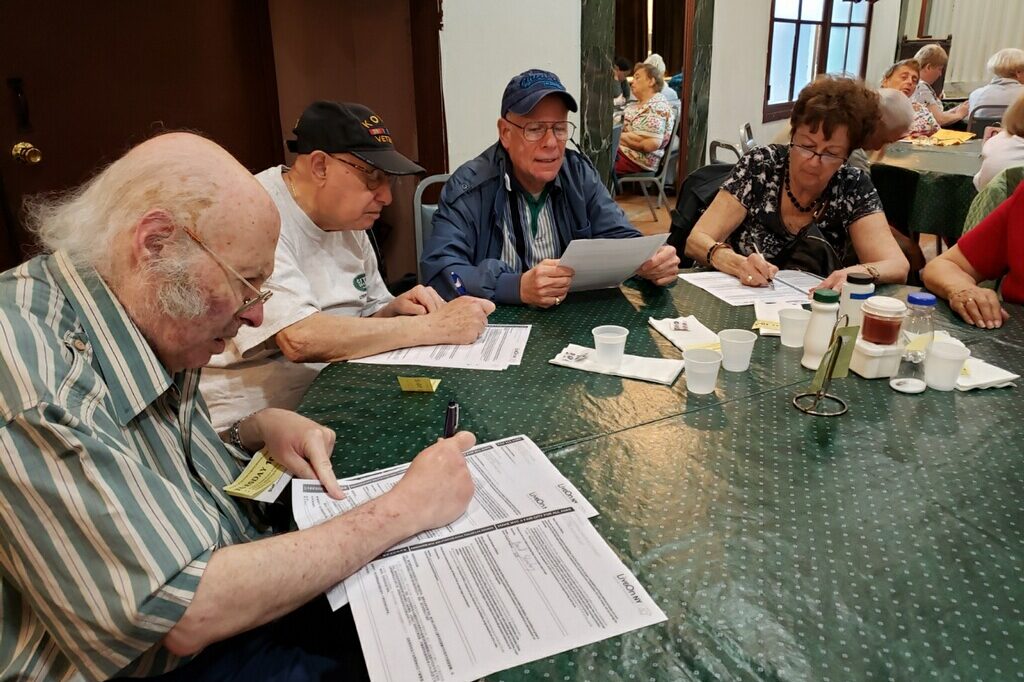HOLOCAUST SURVIVOR PROGRAM
Holocaust Education History

Selfhelp is dedicated to remembering the Holocaust and raising awareness of the survivor population still in need today. Through creative educational initiatives, we’re ensuring that the memory of the Holocaust will not be forgotten by generations to come. Help us educate future generations about the Holocaust.
Zelda
Holocaust Survivor & Selfhelp Client
Discover Zelda’s story, a Holocaust survivor who faced unimaginable hardship with resilience and hope. Born in December 1932 in Drujsk, a small Polish shtetl later annexed by the Soviet Union, Zelda’s life was upended by war. Her family endured Soviet confiscations, Nazi occupation, and the horrors of the Breslau ghetto. They survived by hiding in barns and forests, though Zelda’s mother tragically passed away in 1943.
Liberated in 1944, Zelda’s family navigated post-war challenges, eventually resettling in St. Paul, Minnesota. There, Zelda thrived—learning English, pursuing education, and dedicating over 40 years to teaching Hebrew. Her message to future generations: be kind and help others.
Learn more about Zelda’s inspiring journey of survival and hope.
Watch Zelda’s Full Story on YouTube
Sosana
Holocaust Survivor & Selfhelp Client
Sosana was born in 1926 in a small town in Czechoslovakia and grew up in a loving household with her father and maternal grandparents after losing her mother at the tender age of three. Sosana described her childhood as filled with love and support.
From Auschwitz, Sosana was sent to Bergen-Belsen concentration camp. She reunited with a cousin and was forced to work in a forest. One day, Sosana and her cousin sought help from a female Jewish doctor in Bergen-Belsen. The doctor advised them to continue working, warning that if they stopped, they would end up on a stretcher, dead.
One fateful day, Following the liberation of Bergen-Belsen by the Americans, excess food led to the passing of many young girls, but Sosana and her cousin survived by eating only cereal. After liberation, Sosana returned to Czechoslovakia in search of any surviving family members. Tragically, she learned that her family members had been killed on their first day in Auschwitz.
Read Sosana’s full biography here.
Watch Sosana’s Full Story on YouTube
Ellen
Holocaust Survivor & Selfhelp Client
Ellen was born in Rexingen, Germany, in April of 1933 and her sister, Inge, was born in 1930. Ellen and her sister, Inge, moved in with her maternal grandmother, Oma Betty, who was widowed and lived alone. Her other children, Kurt and Lisa, had already left Germany and settled in New York and Manchester, England. Ellen’s father and his family came from a nearby small town of Haigerloch. Ellen’s first memory was Kristallnacht, or the Night of Broken Glass, when she was just five years old. German soldiers came to Ellen’s home looking for Jewish men and her father hid in a horse feeding trough to escape them. After Kristallnacht, Ellen’s father had to work for the German government and was forced to give up his cattle dealer business. During this time, Ellen’s family were still waiting to receive their quotas from the United States to escape the persecution. Through Ellen and Inge’s Uncle Seligman, they were able to escape Nazi Germany on the Kindertransport. Kindertransport (Children’s Transport) was the informal name of a series of rescue efforts between 1938 and 1940. These rescue efforts brought thousands of refugee children, the vast majority of them Jewish, to Great Britain from Nazi Germany. (courtesy of the United States Holocaust Memorial Museum)
Hedy
Artist, Holocaust Survivor & Selfhelp Client
Born in Vienna, Austria in August 1929, Hedy cherished music and simple joys in her childhood. Her life changed with the rise of the Nazi regime. A supportive teacher nurtured her love for drawing, but due to increasing fear, her parents halted her education.
In 1938, Hedy’s family escaped to Panama, eventually reaching the United States in 1947. She studied at the American Academy of Art and the Art Institute of Chicago. In 1948, she married Eric, a fellow Holocaust survivor, and they became U.S. citizens.
Hedy and Eric moved to New York, where she studied under Isaac Soyer at the Art Student’s League. Her artwork is featured in various collections, including The Museum of the City of New York. She also contributed to art education through teaching and volunteering.
Diana
Artist, Holocaust Survivor & Selfhelp Client
Diana, a painter born in Vienna, emigrated to the U.S. in 1940. She began focusing on Holocaust themes in her art in 1989. During the start of World War II, Diana’s family lived in Ireland before moving to the U.S. from Southampton, where she formed some of her earliest memories.
After the Holocaust, Diana’s parents found two of her cousins. Her uncle was murdered in Auschwitz, while her aunt and cousins survived Ravensbrück and Bergen-Belsen camps. They were later sent to Sweden before emigrating to the U.S.
Diana’s artwork has been showcased in numerous exhibitions across the U.S. and Europe, earning her several grants and awards, including a Fulbright Fellowship. She has also taught studio art at institutions like Queens College and Pratt Institute.
Henry
Holocaust Survivor & Selfhelp Client
Henry, originally named Heinz, was born in 1927 and spent his first eleven years growing up in Augsburg, Germany, just an hour outside of Munich. At the turn of the 19th century, Henry’s family moved from the country to the city of Augsburg. There, the family became proud citizens of the city, as well as patriotic Germans. When World War I first broke out, Henry’s father enrolled in the military and fought for Germany until the very end of the war. During this time, Henry’s father (and his two brothers) had earned the Military Merit Cross and the Iron Cross. During the war, Henry’s father was very deep in the damp trenches and had incurred the lasting damages to his health. A rheumatic fever, which he had received very little care for, gave rise to a valvular heart defect that would bother him for the rest of his life. Even though Henry’s father and the rest of his family were all confronted with antisemitism during the First World War, they were still able to live their lives and had friends who were Jewish and non-Jewish.
After World War I, Henry’s father legally changed his name from Isaak to Justin because he sensed the growing antisemitic sentiment during his time in the military. After the war, Justin earned his living as a traveling salesman for a cigar and cigarette company.
Liane
Holocaust Survivor & Selfhelp Client
Liane was born in Czernowitz (now in Ukraine) in the summer of 1934.
In March of 1944, Russian troops were about to enter Czernowitz and Liane’s parents and other Jewish families decided that to avoid deportation to Siberia, they should flee to Romania. Liane and her parents took the last train before the Russian occupation to Bucharest, leaving their three houses back in Czernowitz. They fled with one suitcase and her father’s medical diploma.
To read Liane’s memoir, please click on the Flipbook below.
Tibor
Holocaust Survivor & Selfhelp Client
Tibor was born in Budapest, Hungary in the summer of 1934.
Tibor’s father, Mor, came from an Orthodox family and had three other brothers. Tibor’s mother was not very religious on her own. Tibor’s mother, Ilona, was born and raised in the countryside of Hungary, and travelled back and forth to Vienna.
Before Tibor’s parents got married, Mor had been considered Polish living in Hungary. Before he proposed, Ilona made one contingency… that Mor and his brother’s would become Hungarian citizens.
By doing this, it had saved his parents and ultimately, Tibor’s life.
Watch Tibor’s Full Story on YouTube
Margareta
Holocaust Survivor & Selfhelp Client
Margareta was born in Gerta Mica, Romania in 1938.
According to the 1930 Romanian Census, approximately four precent of the people identified themselves as being Jewish. She lived with her mother, father, and older sister.
When Margreta was growing up, her and her family, including her grandparents who lived nearby, were forced to wear Yellow Stars. Margareta didn’t understand why until she got older. Her father and uncle were taken to Budapest and put in jail. Margareta’s father, Samuel, wrote to her mother, Ilona, telling her that the Nazi forces had taken him from Hungary to Germany.
After Margareta’s father wrote to her mother, Nazi forces began to collect the Jewish people in smaller towns and bring them to Satu Mare, where they were holding people in temples.
Watch Margareta’s Full Story on YouTube
Sonia
Holocaust Survivor & Selfhelp Client
Born in Poland, Sonia was forced to live in the Warsaw Ghetto until the middle of 1943, when she was taken to Madjanek and shortly after to Auschwitz.
In January, 1945, she was sent to Ravensbrück in Austria for a short period until she was sent to Malchow until February, 1945. She was on a death march and liberated in April of 1945 by American soldiers in Mittenwald, Germany. Sonia met her husband in Mittenwald, where they had their son and opened the first Jewish business after the war.
They settled in Buffalo, New York, where Sonia had a successful catering business. Sonia is also very proud of her volunteer involvement with Hadassah, Amit and State of Israel Bonds.
Watch Sonia’s Full Story on YouTube
Anne
Holocaust Survivor & Selfhelp Client
Anne was born in Frankfurt, Germany, in 1925. Her father’s business was seized by the Nazis, forcing Anne to attend a Jewish school. Her friends were forbidden from associating with her.
During Kristallnacht in 1938, her father was taken to Buchenwald, and their home was threatened. A family friend sought refuge with them, but later died by suicide. Anne’s mother managed to secure her father’s release by presenting his World War I Iron Cross, but he had to leave Germany. He went to England in 1939, but Anne’s mother and brother perished in Auschwitz. Anne escaped on the last Kindertransport to England in August 1939, reuniting with her father before moving to the U.S. in 1940.
In the U.S., Anne lived with relatives in New Jersey while her father was in New York. During the war, Anne and her uncle were suspected of espionage and questioned by the FBI. After the war, Anne married Sy and had a son, Alan, who became a lawyer. Alan and his family live in New York, while Anne’s grandchildren are in California. Her family brings her great joy, and she cherishes these memories.
Watch Anne’s Full Story on YouTube
Robert
Holocaust Survivor & Selfhelp Client
Robert was born in Budapest, Hungary in 1938. In 1942, his father was conscripted into the Hungarian army and in 1943 his family apartment was seized. In 1944 he, his mother and grandmother were rounded up with all the other Jews in Budapest and brought to the town square.
Robert narrowly escaped being separated from his mother and grandmother, and the three of them were relocated to the ghetto where they stayed, under terrible conditions, until they were liberated by the Russians in 1945. After the war, Robert lived with his mother and grandmother. They often spent time with his four aunts who were the only other members of their family to survive. His father never returned.
In 1956, at the age of 18, Robert and some friends were able to escape Communist Hungary and cross the border into Austria. On December 24, 1956 he finally boarded a ship which would bring him to the United States. He settled in New York City and met his life-long partner, Jimmy. They lived together for 55 years until Jimmy passed away in 2017.
Watch Robert’sFull Story on YouTube
Henry
Holocaust Survivor & Selfhelp Client
Henry was born in Leipzig, Germany, in 1924. During Kristallnacht, his father was arrested and sent to Buchenwald but was released due to his status as a WWI hero. The Nazis seized his father’s business, giving it to a Nazi employee. The family remained in Leipzig as forced laborers until they were deported to Theresienstadt in 1943, under the guise of an “honor” for his father’s military service.
In Theresienstadt, Henry collected clothing from the deceased and prepared the camp for a Red Cross inspection. Later, his family was sent to Auschwitz, where his parents and sister were killed. Henry was moved to Friedland, a sub-camp of Gross-Rosen, and worked in a factory until liberated by Russian troops in 1945. After the war, he discovered his family’s fate.
Henry and his wife were smuggled into US-occupied Germany and immigrated to the USA in 1949. He built a career in New York City’s fashion industry, starting as a messenger and rising through the ranks.
Watch Henry’s Full Story on YouTube
Episode 1: Meet Ruth Zimbler
Ruth Zimbler is a 95-year old Austrian Kindertransport survivor. Ruth was only ten years old when Kristallnacht occurred in 1938. During Kristallnacht, she and her younger brother, Walter, witnessed the destruction of the largest synagogue in Vienna from their apartment. Later, her family was locked out of their apartment and her father was sent to Dachau. Concerned about the safety of his children, Ruth’s father secured places for them on the first Kindertransport, a series of rescue efforts that brought thousands of refugee Jewish children out of German-occupied Europe.
Episode 2: Meet Jill Chase
At just six months old, Jill Chase was forced into hiding with Catholic nuns as a safety measure by her family. Jill recounts the horrors of being “thrown out of her home and forced to live in hiding.” Jill stayed in a convent with this group of Catholic nuns for three years. In 1944, a Jewish chaplain from England retrieved Jill to bring her back to her family and home.
HEARTS: HOLOCAUST EDUCATIONAL ARTS
Episode 1: Meet Fred Terna
HEARTS is a virtual exhibition featuring artwork created by Holocaust survivors. Through their art, survivors contemplate their Holocaust memories and process the emotions they carry. By viewing these works, we’re brought closer to the history of the Holocaust.
View the HEARTS virtual exhibition
* To view the virtual gallery, please use Google Chrome or Firefox. Internet Explorer is not supported.
WHAT HAPPENS WHEN HOLOCAUST SURVIVORS STOP SHARING THEIR STORIES

HELP EDUCATE FUTURE GENERATIONS
Selfhelp is dedicated to remembering the Holocaust and raising awareness of the survivor population still in need today. Through creative educational initiatives, we’re ensuring that the memory of the Holocaust will not be forgotten by generations to come. Help us educate future generations about the Holocaust.

